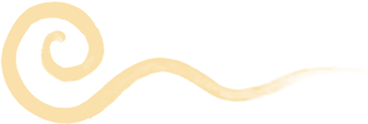Practicing Diffuse Expanded Attention: 3 Healing Visual Experiences to Explore
Practicing Diffuse Expanded Attention: 3 Healing Visual Experiences to Explore
Diffuse expanded attention activates relaxation pathways in the body and expands our conscious awareness.
In May of 2024, I attended a talk by an osteopathically oriented integrative doctor of optometry, and I had an “ah ha” moment that was so delightful that I couldn’t wait to share it with you.
The subtitle of the talk was, “learning challenges and neurological deficits related to vision disorders,” and she talked about how the way we use our eyes affects our brains. One of the things that came up was how young folks, in particular, are so much more depressed, anxious, and sleep-disrupted than ever before because they focus so much on electronics.
Apparently, diffuse expanded attention activates relaxation pathways in the body and expands our conscious awareness.
She said, “in order to un-do the effects of hyperfocus, which leads to anxiety, move your gaze frequently to the horizon.”
Now THAT got my attention.
Expanded, diffuse attention, and “the horizon” are words we hear all the time in osteopathy. In fact, this is the very concept that opens the door to more advanced levels of skill and experience — the kind that have us receive broad, big picture insights (Does this patient love their life? Do I love my life?) as well as subtle, nuanced ones (What does that wisp of a feeling tell me about the patient’s body? About my own body?).
Incredible things happen when we attune through diffuse, expanded attention. Osteopathic treatment can complement, as it wakes up the nervous system and allows it to organically move in the direction of expanded awareness. People become more aware of distant things like birds, clouds, and stars . . . as well as local things like subtle communications from the body, mind, and spirit. Meditators, martial artists, and yogis also speak of these things, and science is only beginning to catch up.
Moving on to illustrate how diffuse, expanded attention is tied to the nervous system.
When we are stressed or anxious, in some level of survival mode (fight-or-flight) our perceptual field narrows, sometimes dramatically. In this state, we lose track of anything that isn’t right under our noses. We experience overwhelm, misplace things, forget the reason we came into a room, have accidents, and tune out the world. In extreme anxiety or panic attacks, vision can literally be reduced to a single point. This is called “tunnel vision” or Peripheral Vision Loss (PVL).
One of the “quick fixes” for extreme anxiety is to breathe into a paper bag. This recirculates carbon dioxide, which stimulates the parasympathetic (opposite of fight-or-flight) nervous system. We’ve explored the more elegant way of maintaining adequate levels of carbon dioxide through nasal breathing (but let’s stay focused here, pun intended).
Versus quick fixes, I’m most interested in behaviors that will build pathways in the brain and nervous system that have us exist more of the time in more creative and open states.
The invitation is this.
We’ve shared so many beautifully balancing behaviors in this space, such as grounding, connecting to the breath, and sitting and walking in ways that balance the nervous system every minute of the day.
What might happen to the moment-to-moment quality of your life if you frequently move your gaze to the horizon throughout your day?
I went wide with my attention just now and felt my whole body exhale.
“Hyper-focused viewing may lead to strain, stress, and contraction. Relax your vision by gazing softly to the horizon, and expanding peripheral awareness.”
— Dr. Wynn Tran, OD
How can we further support relaxation in our eyes and nervous system?
3 Healing Visual Experiences to Explore:
Peripheral Awareness: While looking at an image or object directly in front of you, open your peripheral vision so you can to the edges of your visual field above, below and to both sides. Allow your eyes to gaze softly and broadly, without efforting. Tune into your breath and let your body relax.
Palming: While seated, with feet flat on the floor and elbow supported on a desk or table, rub your hands together as if to spark some vitality in them. Close your eyes, and then cup your hands over them while you notice your breath, and allow any tension to drop away from your body from head to toe. Slowly move your hands away, blink your eyes open, and rest in a soft, expanded gaze.
Eye Stretches: With broad, soft awareness, stretch one arm out in front of you and gaze with both eyes at the tip of your upturned thumb. Gently explore the edges of your perceptual field 360° degrees for 30 seconds. Are some angles more comfortable than others? Do some feel like more of a stretch? How does following one thumb compare with following the other?
I’m always collecting data and in connection mode. I’d LOVE to hear your experience with attuning to the horizon, while exploring the healing eye practices, and anything else you care to share about your brain, body, and life.
Keep me posted, offer a pearl or ask a question by clicking the button at the lower right corner of your screen!
Thank you for being here.
In Celebration of your Emerging Glow & Flow,
Dr. Michelle Veneziano
& the Flow is Medicine Community





